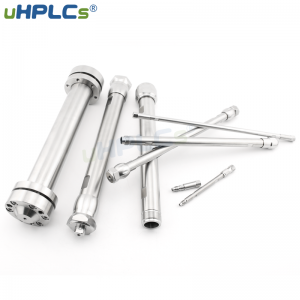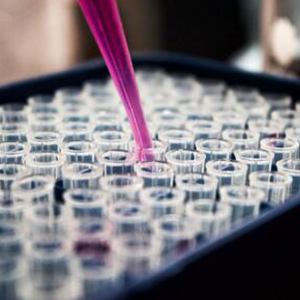Hplc chromatography as the most commonly used chromatography is widely used in biology, chemistry, food analysis and other fields, what are the types of hplc? uHPLCs take you to understand!
Ⅰ. Types of liquid chromatography
1. Sorption chromatography
Silica gel or alumina is used as stationary phase. The weak interaction bond between molecules and silica gel is called adsorption, and the dissolution desorption of the bond. Since the eluent molecules occupy the active site of silica gel before the sample molecules, the sample molecules can be adsorbed only when the interaction with the active site is stronger than that of the eluent molecules. The sample molecules are reversibly bound to the stationary phase by dipole-dipole interactions. The retention time of the stationary phase relative to the substance depends on the different degree of interaction with the stationary phase surface. This is the mechanism by which the sample components are separated.
II. Fundamentals of High Performance Liquid Chromatography
3.0 HPLC versions are mainly distinguished: isocratic HPLC and gradient HPLC.
3.1 Isocratic HPLC
is performed in a single run using only one eluent composition. Therefore, the interaction between mobile and stationary phase is constant over the entire separation time span. Particularly similar substances can be separated very well with this method. This type of implementation is particularly popular, especially in routine applications, where all separation tasks should be pursued as far as possible. Another advantage of this method is that you only need one pump to pump the eluate.
3.2 Gradient high performance liquid chromatography
The composition of the eluent changes continuously with time. In this way, a constant change in the interaction between the eluent and stationary phase is achieved. The sample material is displaced more quickly from the exchange position on the stationary phase. This makes possible the separability of components with very different polarities within an acceptable time. Since the composition of the eluate at the beginning of this separation process is different from that at the end, it is ensured that the system is in equilibrium before starting the separation (equilibration). Mixing of the eluent can be done in a different way depending on the technology of each device.
3.2.1 Low pressure gradient
The mixing of the different eluates is carried out by a proportional valve before entering the pump head and the mixture is conveyed by the pump through the device. This is referred to as a low-pressure gradient. Mixing is done on the low pressure side of the plant (atmospheric pressure) before entering the pump.

3.2.2 High pressure gradient
Each eluent is pumped by a separate pump and mixing takes place on the pressure side of the system. For this purpose, a mixing chamber is used. Such a system is called a high-pressure gradient HPLC. the transfer of the eluent through the HPLC system increases the pressure. In this case, the main part comes from the column. Depending on the separation material, its particles and shape, the column length and the eluent used (different viscosities) the pressure can be up to 300 bar or even higher.
III. Fundamentals of High Performance Liquid Chromatography
4.0 Components of the Selected HPLC System
A standard HPLC consists of at least five main devices: pump, injection unit, separation column, detector with evaluation software, and fraction collector. For HPLC separations, particles with a particle size of 3 to 20 µm are used. On the one hand a larger number of plates can be achieved, on the other hand the mobile phase has to overcome a relatively high back pressure during the transport through the separation column. All units must be pressure-resistant and preferably connected to each other without dead volume.
Post time: Jul-21-2022







